Naughty or Nice? How “Santa” Looks in Other Cultures
Christmas is celebrated in many different ways around the world.
So it's no surprise that the most iconic figure of the season also has many guises.
You may know him as Santa Claus, Saint Nicholas, Saint Nick, Father Christmas, Kris Kringle, Santy, or simply Santa. And depending on where you grew up, there’s a good chance this gift-bearing gentleman “visited” your home around the holidays to leave you gifts.
For some, a bearded and bespectacled old man traveled from the North Pole in a sleigh pulled by reindeer across the skies before climbing down the chimney to fill their stockings with treats. This version of Santa is inspired by the UK's Father Christmas, the Netherlands' Sinterklaas, the Germanic God Odin and even the Greek Myra.
But he isn't the only gift-bearing visitor come Christmastime – not by any stretch.
Let’s take a look at different Santa’s found around the world. You might be surprised at how many different versions of the Santa there are!
Father Christmas (United Kingdom)
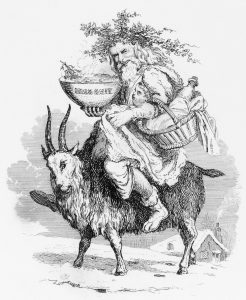
Dating back to the 16th century is the UK’s Father Christmas. A large man donning fur-lined green or scarlet robes, Father Christmas stands as the spirit of good cheer, peace, joy, food, wine and revelry.
Families leave him a glass of sherry or beer and a plate of mince pies as thanks and carrots can be left for his reindeer. Some stories even have him riding a “Yule Goat”.
Traditionally, letters written to Father Christmas were burned on the fire so that they would be magically transported to the North Pole. More recently, however, this practice has fallen out of popularity and letters are now sent via Royal Mail. Father Christmas even replies to letters that are sent by 9th December!

Today, Father Christmas and Santa Claus are nearly indistinguishable, but their origins differ. Originally, Father Christmas was a merry man in green robes who didn't give gifts, but served as the spirit of good tidings. Charles Dickens' book A Christmas Carol features one of the best known examples of this version of Father Christmas.
Like many other versions of Santa Claus, present day Father Christmas rides a sleigh pulled by reindeer and travels down the chimney to leave gifts for children.
Santa Claus (North America)
With his eight flying reindeer (and the later addition of Rudolph the Red-Nosed Reindeer), America’s version of Santa is one of the most recognisable characters in the world.
A merry old man with red and white clothes, Santa lives at his home along with his wife, Mrs. Claus, and their elves on (or near) the North Pole. Come Christmas Eve, he flies across the globe on his sleigh, filling socks or stockings with presents and leaving gifts under the Christmas tree after making his way into homes through by climbing down their chimneys. Those on Santa's naughty list, however, received a stocking of coal.
Children leave him milk and cookies, and often wake to an empty glass and a plate full of crumbs.
The modern day version of Santa Claus is best described by Clement C. Moore's poem written in 1823, “A Visit from St. Nicholas”. In this poem, rituals that surround the preparation for Santa’s arrival are described including hanging stockings across the mantel and spying out the window in an effort to catch a glimpse Santa’s sleigh as he flies across the evening skies.
Sinterklaas (The Netherlands and Belgium)
In both Belgium and the Netherlands, Sinterklaas is the leading figure who, in contrast to St. Nicolas and Santa Claus, is more serious. Depicted as wearing a bishop's alb and cape as well as ruby ring, he rides a white horse and often carries a staff.
Zwarte Piet is Sinterklaas' companion. He has dark skin, curly hair and wears a page's attire. This figure would often listen at chimneys to families’ conversations in order to report back a “naughty and nice” list.
Sinterklaas delivers gifts over a period of three weeks, rather than one night, and he drops the gifts down chimneys as he flies over the houses on his white horse. If the children leave carrots for his horse, Sinterklaas leaves them sweets as well as gifts.
He is celebrated each year by sharing gifts – either on St. Nicholas Day (6th December), or the evening before.
Grandfather Frost (Russia)
In Russia, Santa is known as Дед Мороз (Dyed Moroz), or Grandfather Frost. He is strongly tied to a pagan history, formerly employed as an evil sorcerer who kidnapped children and demanded gifts as ransom.
Дед Мороз is portrayed with a magical staff and a long, fur coat in bright blue or red cloth. Accompanied by his granddaughter, Снегу́рочка (Snegurochka), which translates as “snow girl”, he provides children with a New Year’s party as well as gifts. The pair lives in the town Вели́кий У́стюг (Veliky Ustyug) and they make their annual trip by тройка (troika), a carriage, drawn by white horses. They work together against Баба-яга (Baba Yaga), a witch who steals children's Christmas presents.
Prior to 1917, Grandfather Frost was actually associated with Christmas, but he is now more closely tied to New Year’s. Typically, he arrives on either New Year's Eve or Day, handing out gifts in person or placing them under the Christmas tree.
In Russia, ба́бушка (Babouschka; literally: grandmother or old woman) is another figure who is also said to bring gifts during Christmas.
Joulupukki (Finland)
Joulupukki, or “Yule Buck”, is Finland’s take on Santa. Much like Russia’s Grandfather Frost, Joulupukki is linked to old pagan traditions that remained strong in Finland even after Christianity arrived.
These traditions involved the people warding off evil spirits who wore goat skins and horns. The spirits demanded gifts and frightened children, but eventually these evil goat spirits transformed into the Finnish Father Christmas who today, closely resembles the American Santa Claus. Just how this happened, however, is unclear.
Around the 1920s, there were well-known radio shows that popularized the modern form of Joulupukki with the Santa-like costume and reindeer. They also claimed Korvatunturi, a place near the Polar Circle, as his home. And because reindeer actually inhabit Finland, the new version of Joulupukki took root quite quickly.
Joulupukki differs from the American Santa in that he is seen in the act of delivering presents to children. He also knocks on doors to ask them if they behaved rather than sneaking down the chimney.
St. Mikulás (Hungary)
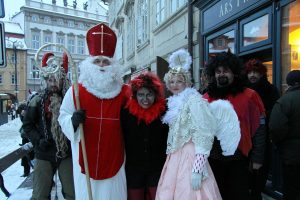
Arriving on the eve of December 5th, Hungary’s St. Mikulás leaves gifts for children to find the next morning. Good children receive a bag of sweets while naughty children are given a gold-colored switch made from birch.
On Christmas Eve, Hungarian children are also visited by “Little Jesus” who also brings gifts for everyone.
Jólasveinarnir (Iceland)
Iceland's Jólasveinarnir, or Yule Lads, are a group of 13 creatures that made their first big appearance in popular culture around the 1930s. Since their debut, they have been depicted as everything from friendly gift-bearers to bloodthirsty creatures that eat children. They have more recently settled into a more playful role.
Each of the 13 is known for a certain trick. They have names like Gluggagaegir (window peeper) and Stekkjastaur (sheep harasser) to give you a hint about some of what they do.
The Yule Lads place gifts in the shoes of properly behaved children in the 13 nights that lead up to Christmas. Poorly behaved children, on the other hand, receive potatoes.
La Befana & Babbo Natale (Italy)
In Italy, a witch named La Befana visits children in the place of Santa. Around the country, her origin story varies. Most commonly she is known as a kind woman who offered the three wiseman shelter on their trip to visit the baby Jesus.
Portrayed as an ugly, old woman riding a broomstick, La Befana is comparable to the witches seen around Halloween. She often wears a black shawl and carries a bag of gifts. La Befana does not like to be seen, so she is said to hit children who spy on her with a broomstick.
La Befana, like Santa, climbs down the chimney to leave gifts, figs, and candies for the good children and a piece of coal, ashes, or dark candy for those who were bad. She has a taste for the finer things, so instead of milk and cookies, she is left a glass of Italian wine.
In certain parts of Italy, Babbo Natale (Father Christmas) brings gifts on the day before Epiphany. The night before, children place their shoes by the door and in the morning, they find them filled with small gifts and candy.
Papa Noël (France)
Resembling Santa Claus in appearance is France's Papa Noël. Rather than reindeer and a sleigh, Pere Noël rides a donkey named Gui (literally: mistletoe). Like Italy's Babbo Natale, the French version of Santa Claus puts small gifts and candies in the shoes of children left by the fireplace.
ほていおしょ / Hoteiosho (Japan)
In Japan, サンタさん (Santa-san) or サンタクロース (Santakurosu) and ほていおしょ (Hoteiosho) are the gift givers. ほていおしょis an overweight Buddhist monk with eyes in the back of his head so he can see how well children behave without them knowing.
ほていおしょ arrives on New Year's Eve once the house is cleaned and beans are thrown for good luck. He is one of seven gods of fortune.
Tomte (Norway, Sweden & Denmark)
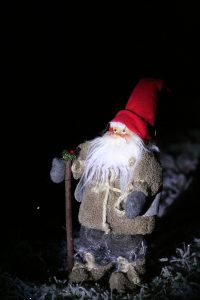
In Norway, Sweden, and Denmark, small gnomes known as Tomte are in charge of gift giving duties come Christmas. Originally creatures that looked over farmers' lands, the Tomte were kind but they had short tempers.
Instead of cookies and milk, the Tomte are left a bowl of rice porridge and they tend not to be fat. Rather than the North Pole, children are often told that Tomte live in the woods beyond their homes.
Christkind (Germany)
Germany's Christkind (literally: the Christ Child) is a gift-giving figure popularized by Martin Luther in the 1500s. The Christkind is often portrayed as a small child with blond hair and angel wings, but like many of the other figures mentioned before, he is rarely ever seen.
Children often write out their Christmas lists and decorate them with drawings then place them on the windowsill for the Christkind who then delivers gifts.
Some of Santa's Partners In Crime
We mentioned a few of Santa's cohorts above, Zwarte Piet, Снегу́рочка, Mrs. Claus and the elves among them, but our list wouldn't be complete without mentioning just a few more.
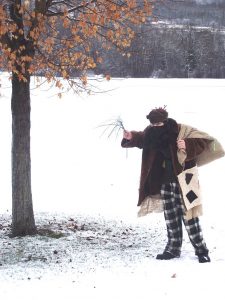
Belsnickel is a figure who accompanies Santa Claus in parts of Europe and the United States. He is often depicted as a ‘mountain man' with fur clothing and a mask with a long tongue. He is commonly employed as a way to encourage children to behave throughout the year.
With a name derived from the German word for claw, Krampus is Santa’s evil sidekick in countries like Germany, Austria, Hungary, Slovenia, and Croatia. He is known for beating children who are naughty. Krampus was better known prior to the 1800s, but the church attempted to stamp him out, so his role today is relatively minor.
Le Père Fouettard (literally: the whipping father) is a figure who is feared by badly behaved children. In one version of his origin story, it is said that Le Père Fouettard kidnapped and murdered three young men before cooking them in a stew. He is described as carrying chains and switches and is said to flog children who misbehaved.
Other Versions of Santa in Different Cultures
- The Basque Olentzero is a character derived from Roman tradition. He delivers presents on December 24th. He is a giant who was granted eternal life after dying in a house fire.
- In Hawaii, Santa is known by the name Kanakaloka.
- In China, Santa Claus is known as Shèngdànlǎorén (Traditional Chinese: 聖誕老人, Simplified Chinese: 圣诞老人) which literally translates as Old Man Christmas.
- The Irish term for Santa is Daidí na Nollag and he is often left Guinness or milk as well as Christmas pudding or mince pies. His name in Scots Gaelic is Bodach na Nollaig (Old Man of Christmas). And in Welsh, he is Siôn Corn (literally: Chimney John).
- Catalonia has the Tió de Nadal, also called the Caga Tió (the Poo Log). Kids decorate the log and leave it treats leading up to December 25, then beat it with a stick so that it defecates presents for them.
- In countries like Spain and Puerto Rico, Los Reyes Magos (the Three Kings) bring gifts on Epiphany. Children fill boxes with grass for the king's camels to eat and the Three Kings thank the children by giving them presents and sweets.
There is certainly no shortage of ways to celebrate Christmas around the world. No matter which Santa leaves you gifts under your tree or in your shoes, we wish you all:

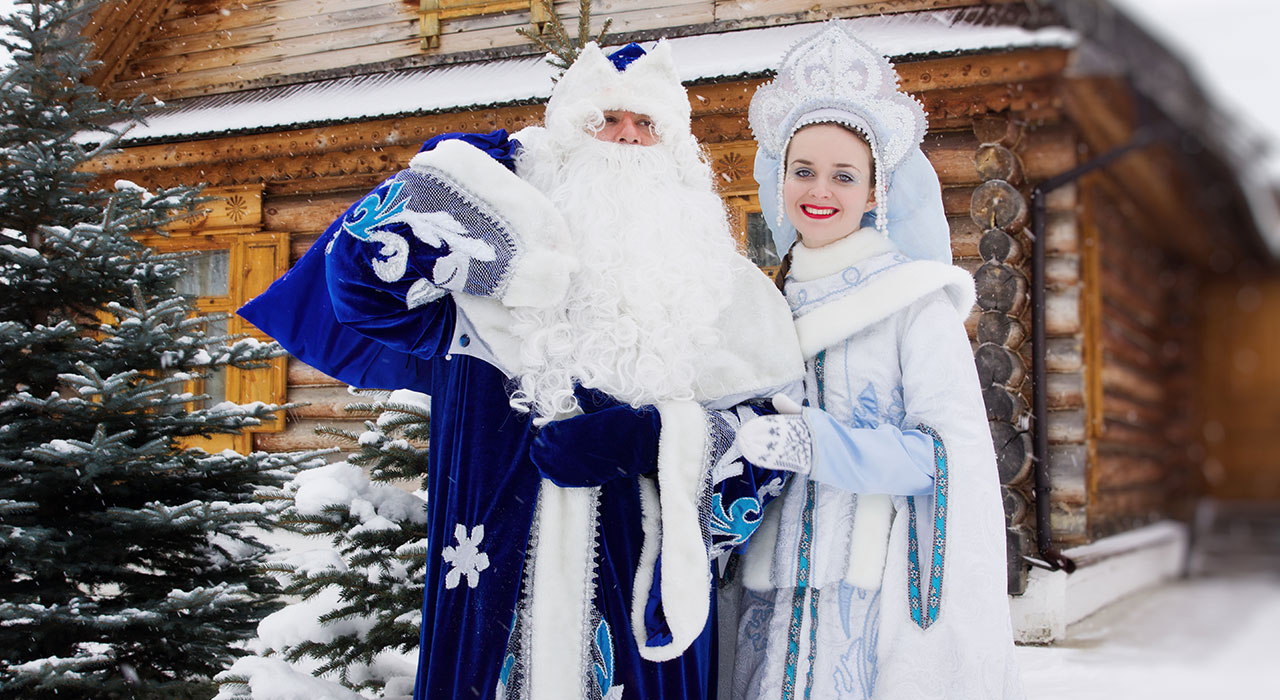
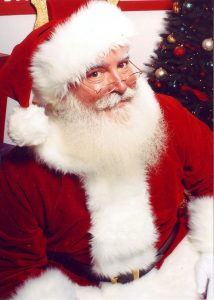
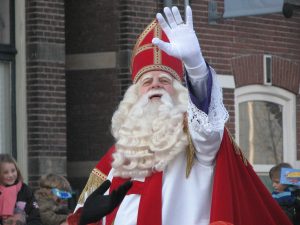
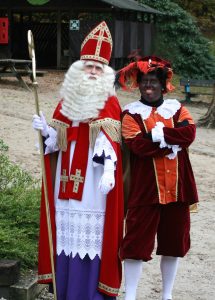
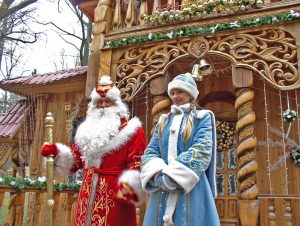
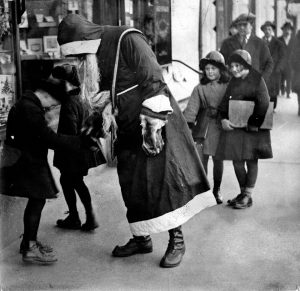
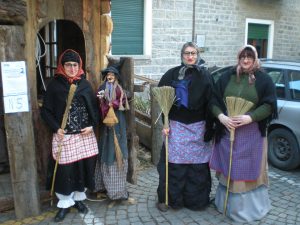
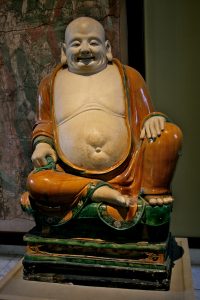
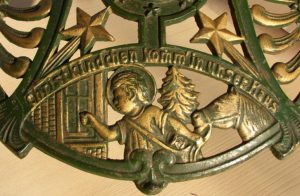

Social